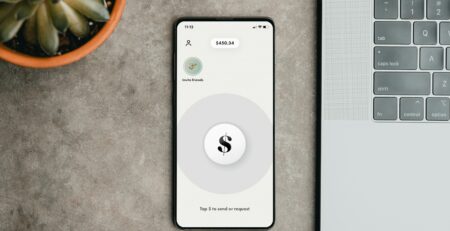Design Thinking for B2B Success
Design thinking has been incorporated into designs for the consumer market in various ways. As the nature of business to business transactions changes to meet new advances in tech and changes in retailers’ behavior, opportunities for B2B marketing and design are increasingly on the rise.
B2B UX design isn’t something most creatives think about. But since retailers have begun to act more like consumers in their relationships with upstream suppliers, designers should be focused on giving them a great experience. Plus, applying design thinking to the unique arrangement between purchasers and suppliers creates a two-way experience that is totally new.
Responding to and creating projects that take advantage of this bi- or multi-directional interaction and still manages to give all parties involved a consistent omnichannel experience takes a different kind of design thinking. Read on to find out some of the particulars of designing for B2B and some of the ways design thinking can respond to them.
What Exactly Is B2B?
Most people imagine business as being an exchange between a merchant and a customer. Someone wants to purchase something and does so from a retailer or a similar business, typically with money.
But there is a massive sector of business that’s left out of this model. Many companies specialize in creating or sourcing components necessary for consumer-company interactions. The retailer has to buy equipment and materials to manufacture and sell their product or service, creating the need for what’s called an upstream supplier.
These suppliers are referred to as being upstream because of their early position in the overall business process. The fact of the matter is that the majority of businesses are B2B suppliers, which makes sense when you understand that every individual retailer-consumer interaction requires the efforts of multiple B2B companies.
Standard B2B UX designing at the nexus of these suppliers assumes certain things to market the finished product. If designers focus on the upstream parts of the overall business process, they can foster and strengthen the relationships between suppliers. Any positive effect in this regard will make the end experience for the consumer-user that much better either through pricing or the user experience.
Transactions in B2B Relationships
Applying design thinking to B2B begins with empathizing with the unique relationship between suppliers and retailers. It’s vital to maintain relationships over the long term so that both parties can see bulk cost savings and other lasting benefits realized.
Another important factor in the B2B relationship is that power balances play a role. In most cases, the balance is much more even than it would be between a business and a consumer since the consumer isn’t as informed about the product and doesn’t play a part in its production. This imbalance of knowledge is called information asymmetry.
B2B relationships have two or more parties that need to cooperate for the final good to be made. As such, negotiations with concessions and compromises are a central feature. Broadly speaking, these decisions are not reached in an adversarial manner since all parties involved have an interest in giving the end consumer the best experience possible.
Sometimes the B2B is extended to include the final purchaser or user of the finished product. It’s referred to as B2B2C and although it might seem to have little difference from a standard B2B relationship, it brings the end customer and initial supplier together in a much more meaningful way.
For example, companies with a unique source of materials can use B2B marketing to highlight the craftsmanship that goes into the product and showcase the production process as an attractive aspect of the finished good.
If the source of raw materials isn’t particularly unique or too convoluted to be used in a promotional way, B2B2C still helps those at the initial supplier to gear development toward the end-user experience. UX designers can help improve the experience along the entire supply chain.
One of the most significant benefits of B2B and B2B2C relationships is that long-term planning and strategizing are more feasible. For example, the supplier or the retailer can take responsibility for hiring staff that serves both parties. A UX designer might work for the retailer so that they can impact the final consumer experience better while marketing teams could work for either the suppliers or the retailer.
B2B UX Design Challenges
In some sense, designing a great user experience for upstream suppliers in a B2B relationship or a supply chain allows creatives to be more explicit. Because the retailer will also have its own approach to creating the best end-user experience, B2B marketing can talk about the experience of the retailer in frank terms.
It makes sense to make marketing invisible or advertise without advertising when you’re trying to make products and services appealing to prospective buyers. But suppliers and retailers are generally better informed than consumers are, especially when it comes to marketing. That makes the user experience of retailers and mid-chain suppliers a bit different than it would be if they were the retailer or final consumer.
Most retailers care about the user pathways on their websites and in physical locations. Upstream suppliers can incorporate all or most of the UX and UI of the final retailer in their marketing to that retailer. Best of all, there’s no need to dance around the fact that marketing and UX, in general, is geared toward enticing potential customers and getting them to make a purchase or subscribe to a service.
Transparency of that kind is difficult in typical marketing for consumers because the realities of the bottom line are not readily addressed without sounding selfish. But B2B relationships are all about being business savvy and the user experience needs to reflect that.
It’s also vital to create a great user experience for both long-term relationships and new or short-term ones. In some cases, the entire supply chain and end product won’t be apparent or even visible to upstream suppliers. B2B eCommerce apps make this reality more likely.
Creating enticing material for short-term users or downstream suppliers and retailers whose business processes are more opaque can be challenging. The most important thing to remember is that promotional material should convince them that their products and services will be more attractive and useful for customers if they purchase components and raw materials from a certain supplier.
The bottom line is important as well, but many B2B companies and designers focus too much on that because they can be more reliant on business terms when their clients are other businesses. Many businesses maintain a primary desire to improve customers’ lives and experiences while still protecting the bottom line as a business necessity.
Time is also an important factor in the sense that B2B transactions aren’t immediate or brief the way consumer purchases are. Buying thousands or even millions of units of a product is a longer process because moving products around takes time.
In some ways, the two ideas oppose one another. Short or surface-level relationships have to be designed around longer timeframes. Long-term intimate B2B or B2B2C supply chains nearly always feature planning on a grander scale – applying design thinking to both styles of B2B relationships gives the unique challenge of building the same seamless omnichannel experience whether the use is instant, short-term, or sustained over a long period.
B2B Marketing Strategy
Beyond the immediate experience of an app or sales intermediary, B2B advertising has to be effective for a more informed audience. That’s not to say that the challenge is more difficult, but it is information-heavy.
Marketing and promotion efforts have been including more information in recent years. Content writing aiming to better inform prospective customers and communicate the expertise and knowledge of the company is highly effective because it taps into natural human curiosity and gives people something they want for free – ideally, so they respond positively to a more business-related call to action.
Since promotional material involves more technical knowledge in B2B relationships, it can get wordy and lose touch with the emotional appeal that makes all great marketing efforts work. Walking the line between informing your audience and boring them with too many needless details.
To some extent, the emotional appeal doesn’t apply to B2B marketing. The choice to buy components or raw materials from an upstream supplier is a business decision at the end of the day and decision-makers at companies don’t generally let individual emotions interfere the way most people do when choosing one product over the other.
However, there is a huge opportunity for UX/UI designers who can bring some kind of emotional appeal to B2B marketing. Because there are so few campaigns using emotional appeal to reach potential downstream purchasers, any advertising that does will automatically stand out.
The most important thing to keep in mind about appealing to emotions with B2B marketing is that enticing factors have to make sense at the meeting table. Even if you can break through to individuals, there is most likely a team in charge of deciding to buy from one supplier or another, especially because the long-term effects and high price make the ramifications of a bad decision more devastating.
So emotional appeal needs to tap not into personal feelings about life and the world but rather into the ideals of working life. Whatever in the mission statement of a company appeals to the people who work there should be used to attract them to the most effective raw material or component from an upstream supplier.
That’s not to say that every B2B marketing professional should be attempting to illustrate every industry as a noble or essential profession. Sometimes people want to help build luxury cars because they love that experience – it’s not necessarily essential and it’s not the work of heroes, but people have every right to buy such goods if they can and want to.
People who buy the components of that luxury car probably won’t respond well to promotional materials that paint them as heroes the way we think of first responders, for instance. They’re much more likely to find material appealing that illustrates how they give people the opportunity to break out into the open road in style.
Think of luxury car commercials – they tend to feature people in fine clothes driving in pristine locations. The idea is that the car is comfortable and performs well. It won’t be bothersome the way lesser vehicles are.
That’s what appeals to people about luxury vehicles. It also helps foment the glamour appeal of purchasing them. B2B marketing should attempt to access these feelings. As you can see, the emotional aspect of such marketing is operating on a different wavelength than it does in normal marketing. But it’s still based on feelings and opinions.
Applying Design Thinking in B2B UX Design
We’ve already established how empathy helps designers and marketing professionals access the thoughts and opinions of retailers and downstream manufacturers to make B2B marketing more effective.
The rest of the design thinking process also applies and may operate on a different level just like the emotional appeal is different from its traditional use in commercials and other promotional material. After you empathize with the final product and the people who make it, you need to define the problems they have delivering the product.
This is why applying design thinking can be so hard to imagine when it comes to B2B companies. It’s kind of like having two layers of design thinking. There’s the design thinking of the people trying to advertise the final product and then there’s another layer of problem-solving for their supply chain.
It’s like you’re problem-solving to help others in their problem-solving. Don’t worry, though. When you apply it to a practical supply chain, the process feels much less convoluted.
And then it comes to the iterations. Building designs, wireframes, and prototypes until you have the right solution that meets the needs of a given supply chain is how iterative approaches like design thinking work. Naturally you can’t doctor the components or raw materials much in most circumstances, but you can design better transportation, access, or construction processes that pass along savings or other benefits to downstream buyers.
The user experience of B2B acquisition varies widely and likely involves the careful study of highly unique specializations. As such, user research and outreach look completely different from traditional UX design and more than likely change completely from client to client.
That means creatives could be crafting tailor-made experiences for certain companies and industries and then moving on to do the same thing for another company or industry. Broadly speaking, UX designers working in B2B relationships have far more opportunities for novel design than they would in the traditional consumer-retailer setup.
Testing and implementing continuous iterations is more challenging because they have an outsized effect and magnify along supply chains. Making a component incompatible or less effective with one iteration could well make it impossible to give the final product or service to the final consumer.
So the design thinking process is typically more in-depth for B2B. It can take longer and be more involved or even feel lethargic for designers who are eager to see their ideas applied in the real world. But risk-taking is different at these levels than it is when your goal is a one-off or series of one-off interactions.
Marketing and the B2B UX design process need to rise to that level to be effective further up the supply chain. But they can also vary as widely as individual products themselves. There’s certainly no shortage of opportunities for designers in this wide field provided they can make the proper changes to their design thinking approach.
Conclusion:
Most people aren’t aware of the breadth and depth of supply chains, but B2B is nonetheless a huge part of the work done in the world. Designers need to be able to rise to the unique challenges of business relationships no matter how opaque, short-term, or specialized they are.
Emotional appeals and other methods used in consumer-directed marketing don’t work quite the same way in B2B situations, but they are still operational in many different ways. The design thinking process is still entirely applicable and useful when the user is a business with their own end-users in mind.
Opportunity abounds in the B2B realm for enterprising UX designers who can account for the specificity and uniqueness of relationships between companies. In the end, all these supply chains still end with a final user, and designing upstream will only improve the result in the end.











